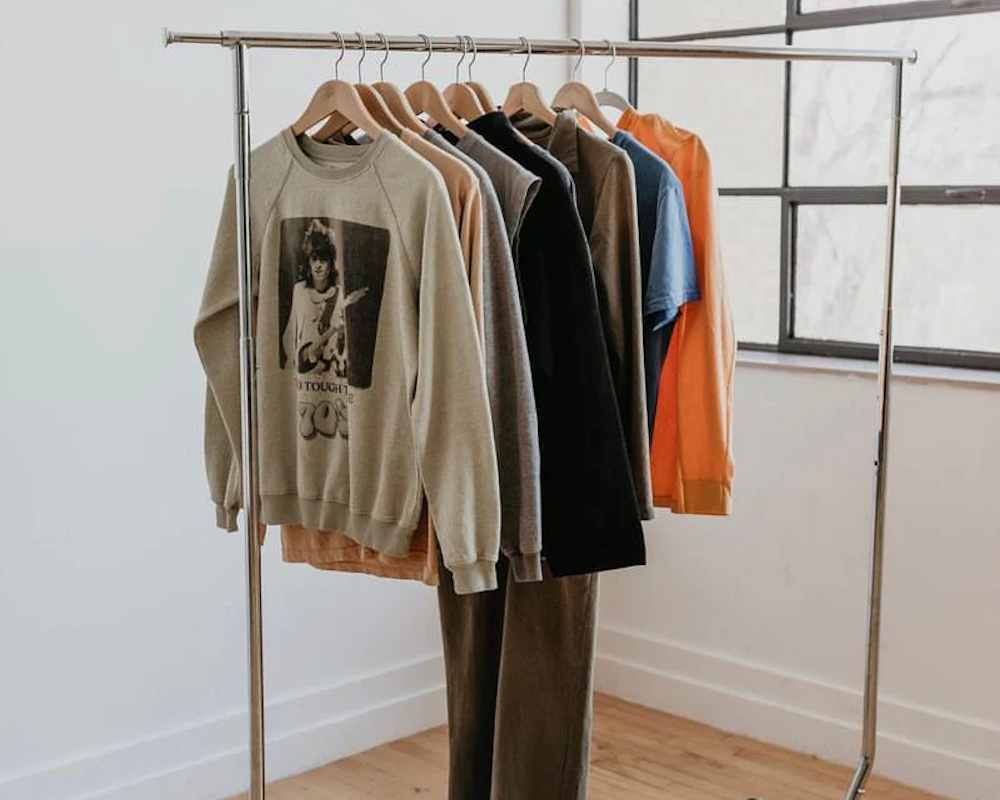The fashion industry plays a role in the environmental impact of clothing production. Yet, our environmental impact starts at our closets and the lifespan we give to our clothes. Not only in what we invest in but also how we care for our clothing. It begins by having the intention that a garment is worth more than being trash. Or moving endlessly through the racks at secondhand shops.
Essentially, how we choose to care for our clothes, results in the length they stay out of the landfill. Below are 4 easy ways to give your clothing the longest lifespan possible.
Wash-less & hang dry
Who's guilty of washing used clothes after only one wear?
Unless it's stinky or stained, the reality is, clothes don’t need washing often. The more washes, the more the fibers stretch and breakdown. Instead, consider only washing clothes when they are actually dirty. Alongside, opt to hang dry your clothes. Not only does this create an eco-friendly laundry routine by saving energy but it's also much gentler on clothing than being tossed around in the dryer.
Mend or alter
Raise your hand if the hole in your favorite sweater sent it straight to the giveaway pile?
It's okay, but it could've been fixed. Though it may take extra time, mending clothes is the ultimate way to preserve their life. If the idea of sewing intimidates you, consider taking an online class. Another motivator is to have a wholesome sewing party with friends. Learn how to sew from one another and make it a time for bonding.
If a clothing piece needs more professional alterations like hemming, find a local tailor. Someone with this skillset can take something old and make it brand new again. This also helps support local business in your area.
Wear at least 30 times
Have you ever bought an outfit for an event that you only wore one time?
We’ve all been there. That's why the #30wearschallenge was originally created. The concept was first brought to light by Olivia Firth of Eco Age— an environmental consulting agency. The idea is to only buy a clothing item if you can see yourself wearing it at least 30 times. If the answer is no, don’t buy it.
This concept offers a targeted approach to how we view our wardrobe. A challenge to cherish and make use of each piece of clothing before you decide to let it go. There's even an app called 30 Wears. That promotes accountability for how often you wear a piece of clothing. The challenge also inspires getting creative with your wardrobe—experimenting with different outfits and ways to wear your clothing.
Store properly
Are your favorite sweaters currently drooping from a wire hanger in your closet?
Don’t worry, it's not too late to properly store them. The natural stretch and pull of fabric can be greatly minimized by how we care for our clothing in our closets. The best rule of thumb is to focus on what can be hung and what can be folded.
Clothes you should fold:
- Delicate items such as cashmere and heavy knits.
- Denim should also be folded.
- Casual items such as T-shirts and tops should either be folded or hung depending on fabric.
Clothes you should hang:
- All outerwear — denim jackets, leather, winter parkas.
- Anything silk or linen.
- Dresses.
- Suits.
- Consider storing cocktail attire in a garment bag.
Also invest in quality hangers made from velvet or wood. Not only will this be better for the clothing but it’ll help keep your closet looking its best as well.
Like all healthy practices, it takes time to integrate. But again, remembering it’s in our control to give our clothes the longest life possible. Setting the intention to reduce environmental impact through how we care for our clothes is the first step.






